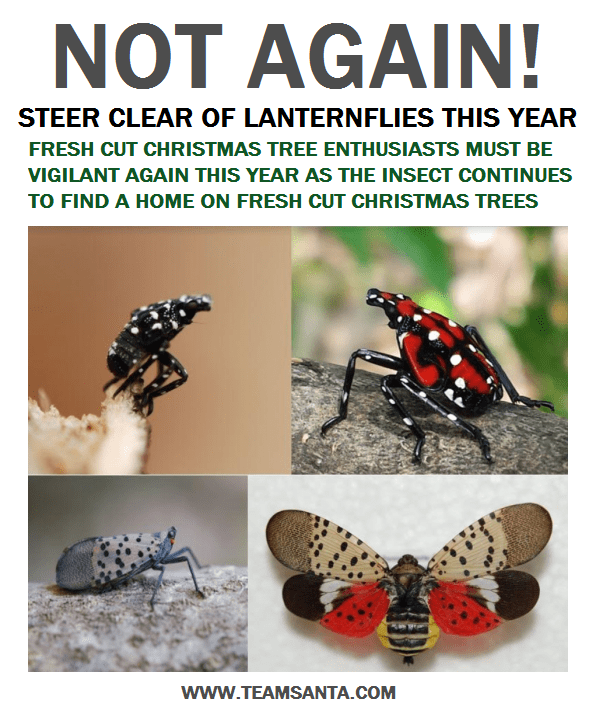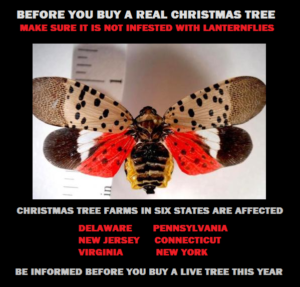
You might remember these little guys from last year. An insect called the Lantern Fly caused havoc among Christmas tree growers in several states is back in 2019. This time the bug was spotted in southern New Jersey in Camden county. Agricultural experts are getting ready to grab hold of another potential infestation of crops, caused by these spotted little insects. Last year we reported that the Lanternfly existed in the crops of live Christmas trees grown for the holiday season 2018. Now early detectors have spotted the lanternfly again, among crops in southern NJ. It’s not clear if NJ is an isolated instance regarding geographic location, but if history is a barometer, then you can probably expect to see the insect again if you plan to put up a live Christmas tree in your home or business during this upcoming holiday season. The lanternfly attaches itself to the branches and trunk of a fresh cut Christmas tree. During the excitement of being caught up in the holiday season, you might miss these small insects saddled to the branches or trunk of your real Christmas tree. Current information on the bugs suggest that you inspect your tree really good before you bring it into your home. Additionally, shaking the fresh cut Christmas tree vigorously upside down has shown to be the best measure for shaking the little bugs loose. As usual, let your common sense be your greatest resource and exercise vigilance related to fresh trees or plants that you bring into your home. If it looks like a bug on the trunk of your natural Christmas tree, in all probability it is a bug. Experts say to exercise caution. A once over all the branches with a flashlight and shaking the tree vigorously upside down before purchasing and then bringing the tree into your home or business. “It’s important to be extra vigilant”, says Ms. Sharon Wilson a volunteer at the Agriculture Center for US businesses both large and small. If you want to be absolutely certain that you do not bring any bugs into your home this holiday season, buy an artificial Christmas tree instead of a live Christmas tree. You can leave the tree up as long as you want without creating a fire hazard. You don’t have to water an artificial Christmas tree either. You can enjoy the scent of a live Christmas tree by using a can of pine scented air freshener. Artificial Christmas trees are definitely more convenient and do not create the mess that a real Christmas tree does. You can even buy lighted artificial Christmas trees, where the lights are already pre-installed. It also helps remove the possibility of you or one of your family members waking up next to a lanternfly sitting on your pillow. For more information on the lantern fly for 2019, bookmark this website and enter lanternflies into the search box. Wowser! There goes Santa Claus testing out his new sleigh again. So until tomorrow, we hope you have a terrific day. Happy decorating!
Kind Regards,
Blitzen @ Team Santa Inc.
www.teamsanta.com
😎

